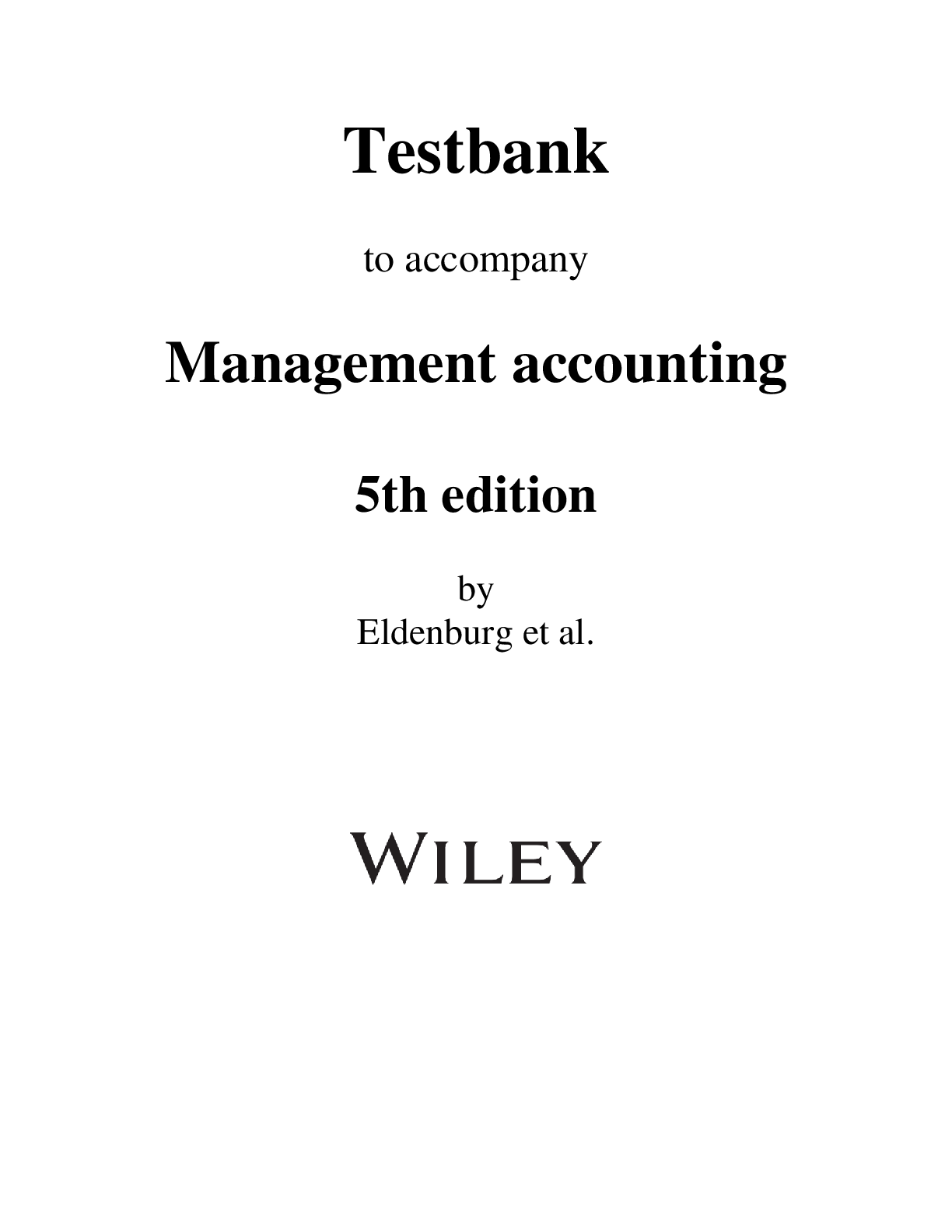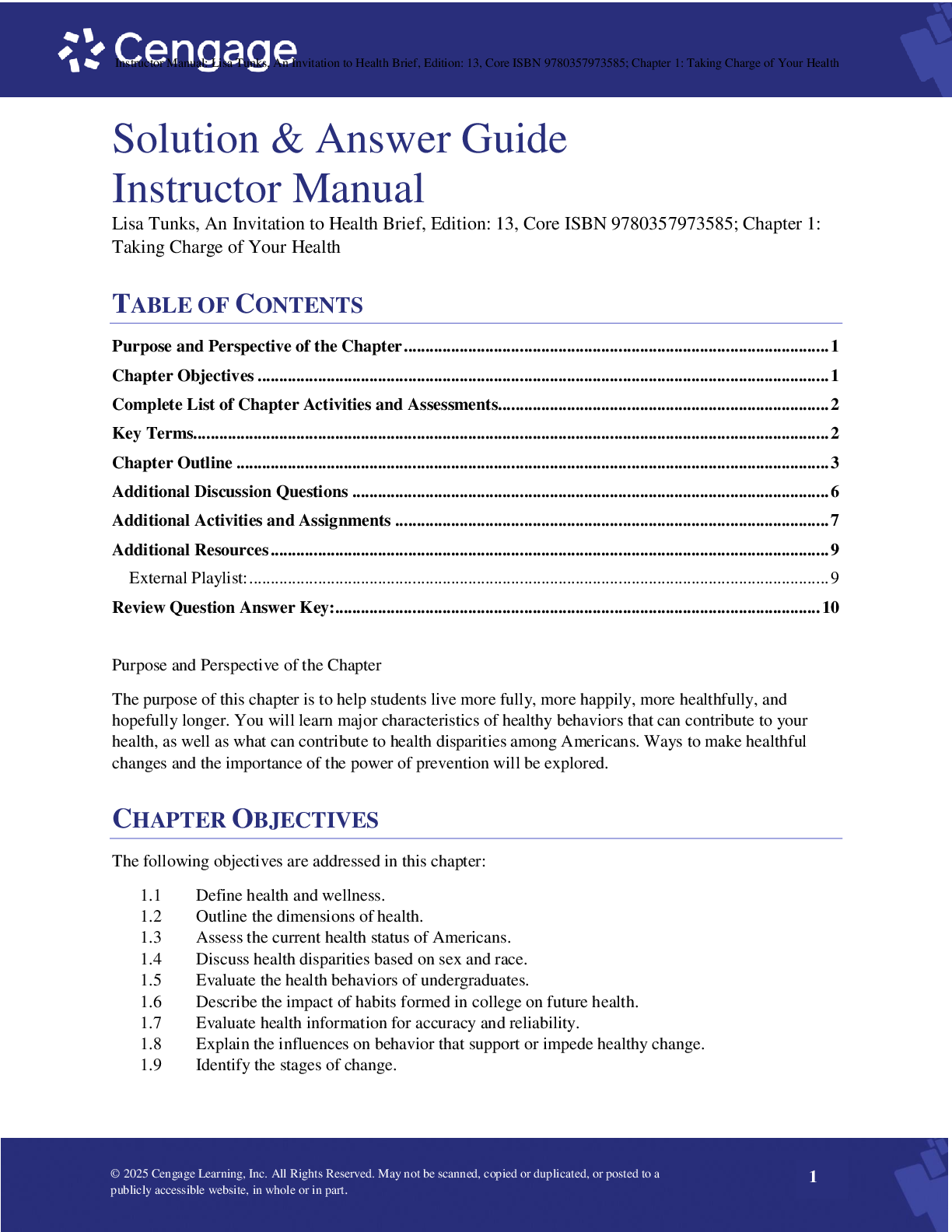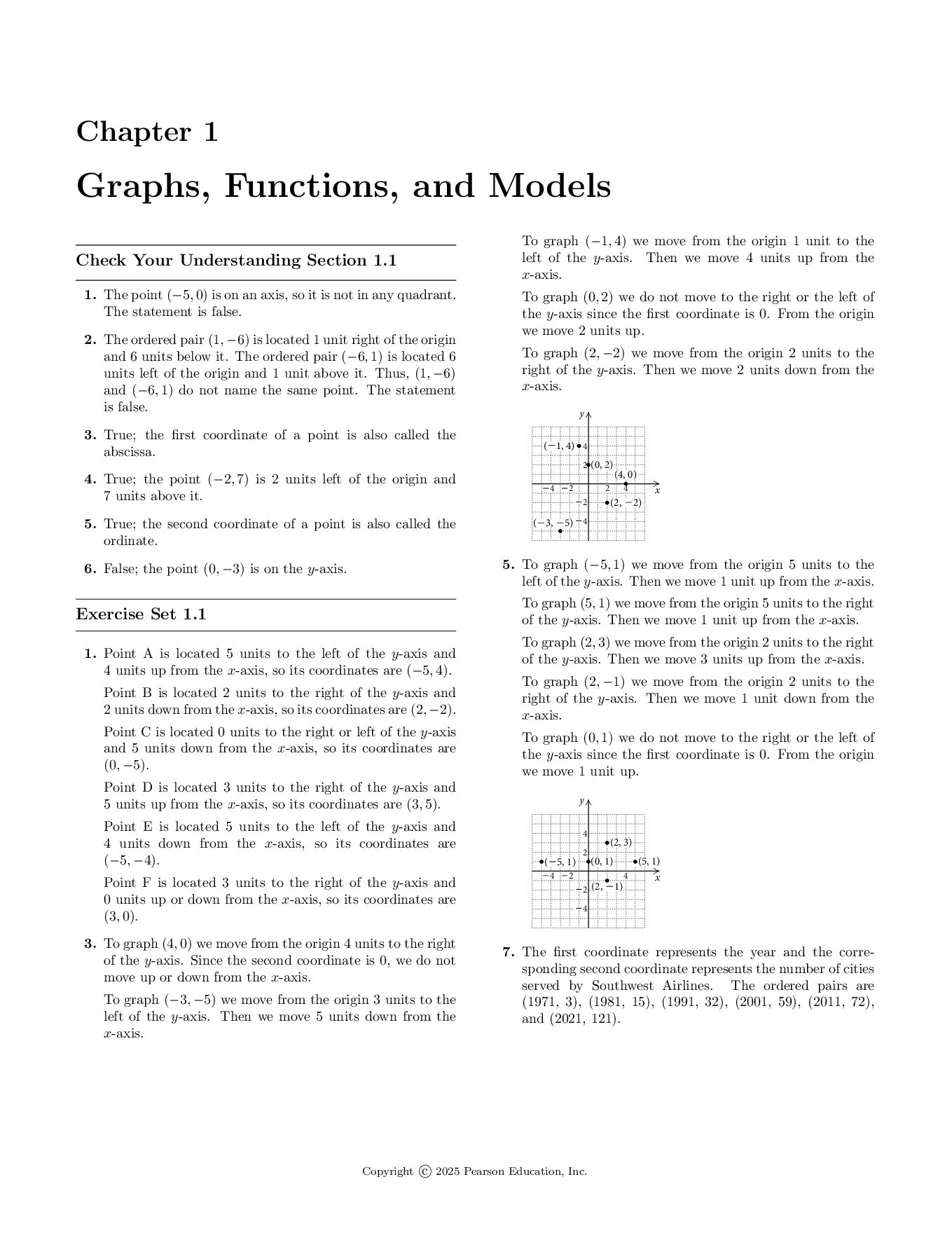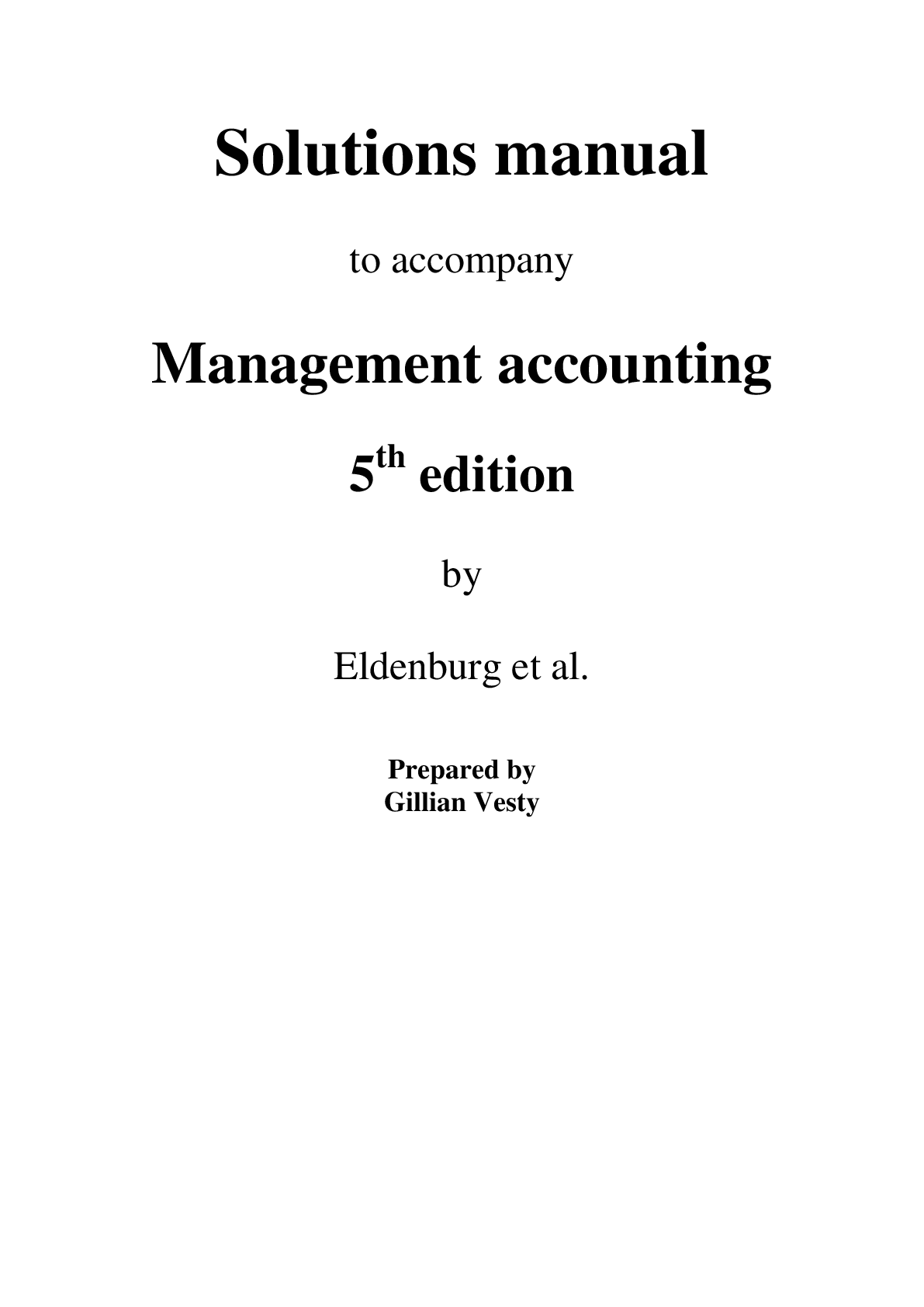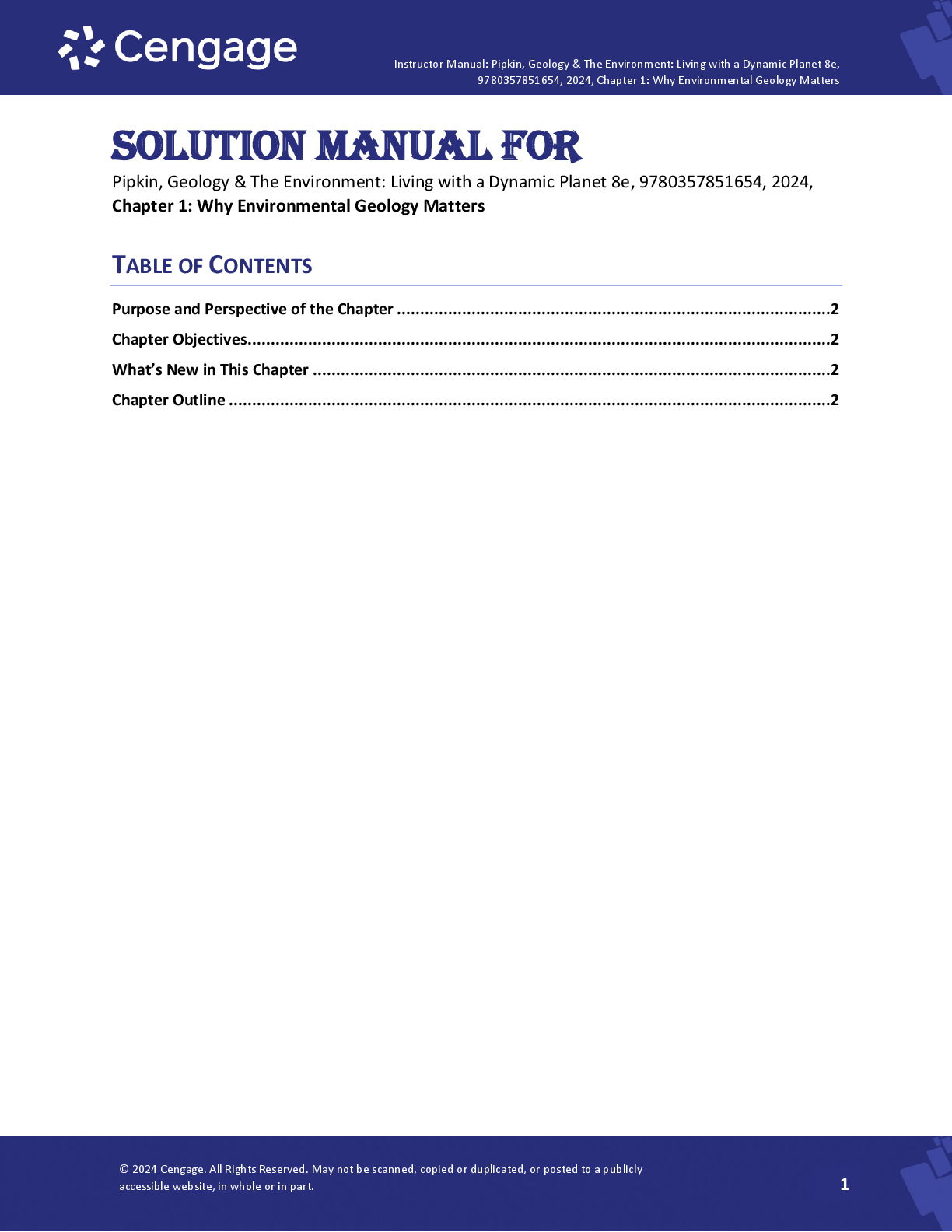Accounting > SOLUTIONS MANUAL > Solutions manual to accompany Management accounting 5 th edition by Eldenburg et al. (All)
Solutions manual to accompany Management accounting 5 th edition by Eldenburg et al.
Document Content and Description Below
Solutions manual to accompany Management accounting 5 th edition by Eldenburg et al.Chapter 1: The role of accounting information in management decision making Questions 1.1 Explain the value chain an... d list ways that value chain analysis benefits organisations. (LO4) A value chain can be described as the key activities engaged in by the organisation or industry. We can view the value chain on two levels: at the industry level, and at the (more common) organisational level. Refer to figure 1.5 for a sample industry value chain and to figure 1.6 for a sample internal value chain. Value chain analysis may benefit an organisation in a number of ways including: Focuses on activities. The central feature of the value chain is its focus on activities and processes rather than functions or departments. This makes identification of improvements across segments more likely. Encourages a broader organisational view. This is particularly so for management accounting staff and business unit managers. Management accounting staff are more likely to take a broader perspective if using a value chain framework when considering the consequences of decisions. Breaks down more traditional representations of organisational activity. A value chain framework encourages higher levels of cross-fertilisation and communication between business segments, so that decisions are not confined by the traditional boundaries of functional areas. Externalises thinking by incorporating suppliers and customers. An organisation‘s value chain encompasses not only customers and suppliers, but in some cases extends to the customers‘ customers and the suppliers‘ suppliers. Analysis of the value chain leads to improved relationships between the organisation and others in the value chain, creating an extended organisation that can respond flexibly to dynamic and competitive environments. In other words, value chains explicitly recognise that no organisation operates in isolation from suppliers and customers. Reinforces other initiatives such as activity-based costing (ABC). With the focus on activities, a value chain framework provides a sound foundation for exploring activity-based costing (which is covered in chapter 4). ABC uses activities as the foundation of product and service costing. Moreover, a value chain framework complements other recent initiatives like strategic cost management, which refers to the simultaneous focus on reducing costs and strengthening an organisation‘s strategic position. This commonly involves taking a longer-term view of cost management and decision-making. Provides a foundation for outsourcing and strategic alliance decisions. A value chain framework serves as the foundation for considering decisions such as outsourcing of particular parts of the value chain and for considering the formation of strategic alliances with say a distributor. In this way, the value chain serves as a strategic tool [Show More]
Last updated: 2 days ago
Preview 5 out of 946 pages

Loading document previews ...
Buy this document to get the full access instantly
Instant Download Access after purchase
Buy NowInstant download
We Accept:

Reviews( 0 )
$7.50
Can't find what you want? Try our AI powered Search
Document information
Connected school, study & course
About the document
Uploaded On
Jul 28, 2025
Number of pages
946
Written in
Additional information
This document has been written for:
Uploaded
Jul 28, 2025
Downloads
0
Views
3
